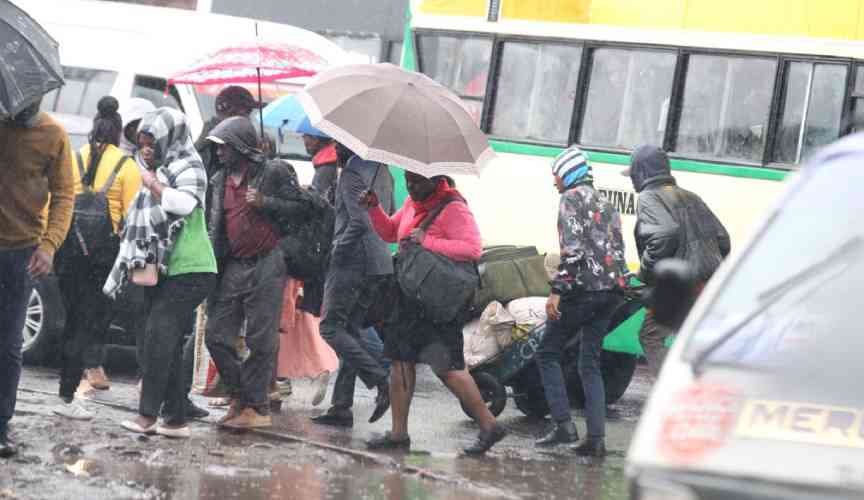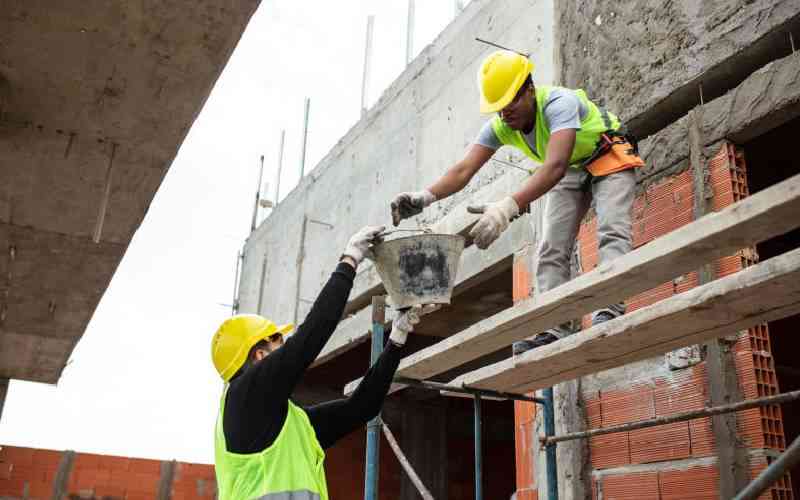
Just past Uthiru on the way to Nairobi’s city centre, there used to be a big signboard inscribed: ‘Welcome to Nairobi, the Green City in the Sun’.
The last time I checked, it was not there. Maybe it has been hidden by the trees – or it was vandalised.
I saw that signboard for the first time about 30 years ago when I was reporting to Form 1, an innocent country boy. I do recall Nairobi was really green; trees were everywhere.
Some estates like Lavington had single dwellings hidden behind huge trees. Loresho was being built around plenty of coffee bushes. Runda was unknown. Sarit Centre was the most noticeable building around Westlands; the rest of Kirungii, as Westlands was called, had lots of trees. Even Eastlands was green.
Awe and fascination
Today, things have changed. The once single dwellings are now flats, the once secluded estates are now for everyone, no longer commanding the awe and fascination they once commanded. The Eastlands plains are now estates that stretch to Machakos. Westlands is now home to multi-storey flats and office blocks.
Nairobi seems to be turning into a giant bedroom. Why the bedroom? Because the new buildings rarely take care of you when you are awake or not working – no parks, no playfields for children, no theatres and no industries except for services, dominated by eateries and beer joints. It is no wonder the percentage contribution of manufacturing to GDP has stagnated.
Lots of investors, not just in Nairobi but from other parts of the world and the counties, are pouring money into real estate, driven by high returns (some say lack of alternatives and safer investment opportunities). Nairobi is the place to put money – whether the money is clean or dirty.
The demand for housing outstrips supply, thanks to rural-urban migration. Even devolution has not slowed this down. No wonder MCAs and governors are always around the city; their vehicle number plates betray them.
The former owners of single dwellings are making good money developing apartments and selling them. Some stay in the same premises or, with their newly acquired money, shift to the few remaining leafy suburbs. Some leave the country to enjoy their wealth elsewhere. The popularity of holiday homes outside Nairobi is taking care of this ‘displaced’ group.
Behind the flats, the bedrooms, a pattern is emerging: our cities are resembling American ones, where the poor live in the inner city, while the affluent live in the suburbs , with plenty of land to build big houses and enjoy their freedom.
Real beneficiaries
In the next few years, the flats in Lavington, Westlands and other leafy suburbs will decline in coolness. Flats with more floors will be built, bringing more people and further lowering their attractiveness.
The real beneficiaries are the current flat sellers riding on the residue of past coolness.
Stay informed. Subscribe to our newsletter
The building of highways and railways will make it economically sensible to live further from the city centre with its congestion and other problems. An electric train will take 30 minutes from Nakuru to Nairobi. Such a transport network might make towns like Kitengela, Athi River, Kiambu, Limuru, Ruiru and Tala the Nairobi Bedrooms for the affluent.
Today, these small towns are bedrooms for the poor who cannot afford the high rent near the city centre. But as more flats are built, rents are likely to go down.
Insecurity in small towns has been the biggest worry for the affluent. This is being sorted out by gated communities. It is also likely that as the affluent and influential leave the city, they will enhance security in their new locations.
The CBD will be more European or (maybe Indian), with the line between business and residential premises blurring. The owners of Chester House on Koinange Street were ahead of their time.
In the past, Nairobi was zoned into low density and high density areas. That seems to have been relaxed, with flats cropping up anywhere.
The designers and those behind zoning the city were very intelligent. Have you noticed how they used ingenious methods to retain their privacy? Between Wangige and affluent Spring Valley, they put KIA; between Loresho and Uthiru, a golf course and the University of Nairobi.
Approximate divide
Where there was no institution, there was a coffee farm or forest, like between Muthaiga and the rest of Kiambu. Kibera neighbours a golf course. Why? The zoning of Nairobi was not random. Look at the map of Nairobi when not in a hurry.
The CBD was also zoned, with Moi Avenue the approximate divide.
East of this road are commoners, with matatus and lots of pedestrians. The western part is cleaner and less noisy, has five-star hotels and even a golf course. Even key Government offices are to the west of Moi Avenue, including the Office of the President and Parliament.
Its epicentre has shifted to Upper Hill. The closeness of the Judiciary to commoners is noticeable.
It is everyone’s dream to shift to the leafy suburbs or western part of Moi Avenue, either to work or sleep. Working hard (or being corrupt) can sail you across this street. That dream may change in the next few years as residential patterns change.
It is a paradox that ICT and devolution have failed to destroy the myth of the Green City in the Sun.
 The Standard Group Plc is a
multi-media organization with investments in media platforms spanning newspaper
print operations, television, radio broadcasting, digital and online services. The
Standard Group is recognized as a leading multi-media house in Kenya with a key
influence in matters of national and international interest.
The Standard Group Plc is a
multi-media organization with investments in media platforms spanning newspaper
print operations, television, radio broadcasting, digital and online services. The
Standard Group is recognized as a leading multi-media house in Kenya with a key
influence in matters of national and international interest.
 The Standard Group Plc is a
multi-media organization with investments in media platforms spanning newspaper
print operations, television, radio broadcasting, digital and online services. The
Standard Group is recognized as a leading multi-media house in Kenya with a key
influence in matters of national and international interest.
The Standard Group Plc is a
multi-media organization with investments in media platforms spanning newspaper
print operations, television, radio broadcasting, digital and online services. The
Standard Group is recognized as a leading multi-media house in Kenya with a key
influence in matters of national and international interest.









